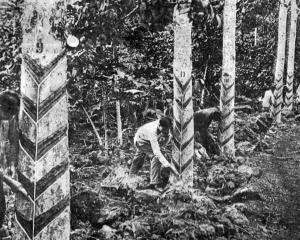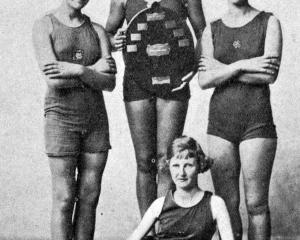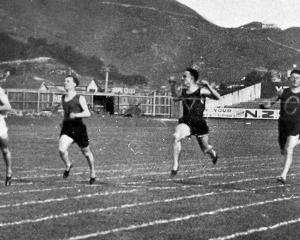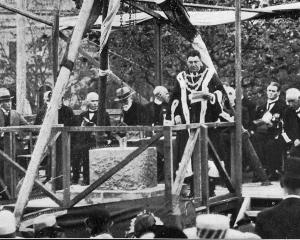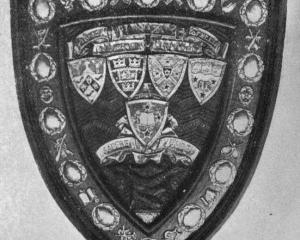The road to Hawea has been broken abruptly by the river, and to get to the other side it has been necessary to use the services of a ferry-boat.
Two long punts lashed together supported a platform, and on this horses, vehicles, and wayfarers mounted while the ferryman ''toted'' them across.
At last it has been possible to provide funds for the building of a bridge and to-day a fine iron structure, with two massive girders of reinforced concrete, carries the road across the river, and the days of the ferry are over.
The formal opening of the bridge took place on Thursday afternoon, and the Minister of Public Works (the Hon. W. Fraser), the session of Parliament concluded, was able to journey into the Central - into the midst of his own people - to perform the ceremony.
Visitors attended in large numbers, and motor cars, gigs, buggies, and all kinds of vehicles carried people from places as far distant as Clyde and Cromwell, and Pembroke, on the shores of Lake Wanaka.
• To improve the shooting of the North End Platoon (National Reserve), one of its members, Dr Jack (professor of physics in the University) has devised an ingenious contrivance, the merits of which were amply demonstrated.
When a shot fails to reach the bull's-eye several faults may contribute to the result, and the apparatus enables one to say whether these are due to (1) incorrect sighting; (2) canting of rifle; or (3) pulling instead of pressing the trigger.
The apparatus is attached to the barrel of the rifle, and consists of a brass tube of about one inch in diameter, in one end of which is placed a four-volt lamp.
In this tube slides another tube, in the end of which, towards the lamp, a lens is fitted, while in the other end is placed a plane mirror tilted at 45 degrees.
By this means an image of the filament of the lamp is thrown at right angles to the direction of fire, and falls upon a screen.
By moving the sliding tube the image can be sharply focussed.
As the distance to the screen can thus be made large, any small variation from the correct position of the rifle is very much magnified.
• ''Much has been done in the way of preserving kinematograph records of the dances and customs of the Maoris'' (states the annual report of the Dominion Museum).
''It is also desirable that phonograph records of Maori music and the rhythm of old Maori songs should be secured. Before the remaining native birds become more scarce it is also desirable to obtain kinematograph records of their natural attitudes and flight.''
- ODT, 30.10.1915
• COPIES OF PICTURE AVAILABLE FROM ODT FRONT OFFICE, LOWER STUART ST, OR WWW.OTAGOIMAGES.CO.NZ

